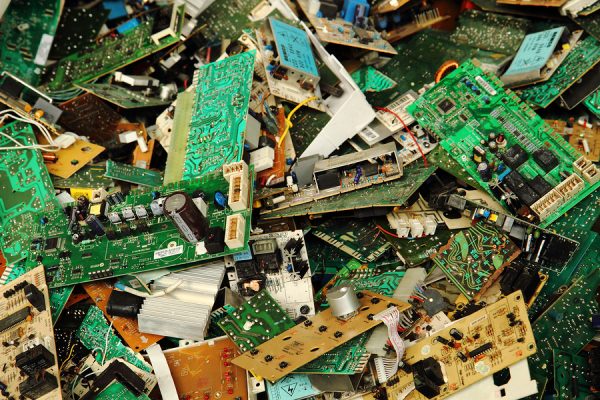
Throughout the world, The Global E-Waste Statistics Partnership tracks the e-waste generated in each country. Per the last report (2016), the U.S. generated close to 6.3 million tons. That was up from 6.11 million in 2015. Every day, people are upgrading their phones, computers, and other electronic equipment for the latest, greatest models. The older items head to solid waste facilities or stores in states that mandate e-waste recycling.
Not every state makes e-waste recycling mandatory. Just over 20% of e-waste is actually recycled and not dumped in landfills. Consumers and business owners can still do their part by making sure their outdated electronics go back to the manufacturer or a certified e-waste facility. What happens from there? Have you ever thought about how electronics are prepared for recycling? Here’s a look at the different stages.
Collecting the Electronics
There are a few ways electronics can be collected for recycling. You may drop them off at a nearby collection point. In some areas, you’ll bring them to the solid waste district in your country or town. You might have a store, such as Best Buy or Staples, that you can bring them too. You may have to get materials to mail them to a processing facility. It’s less common in towns, but curbside pick-up of electronics may be an option if you live in a larger city or metropolitan area.
Business owners have another option. You could arrange with an e-waste recycling firm to pick up items at your business. This is an important step to consider if you’re recycling computers and other electronics that may contain customer or employee information. You need to hire a firm that can destroy the data. You don’t want to ignore this step and have information stolen or accessible after it changes hands.
During the transfer from your office to the e-waste recycling company, you may want to request chain of custody protocol that ensure you where your items are from the moment they leave your building. Look for a certified ITAD and e-waste recycler that offers customized services like real-time tracking and even computer monitoring of the destruction/recycling process.
Removing Components and Breaking Down Items
Once the electronic item is with a recycling facility, components like cables, batteries, and ink/toner cartridges are removed. Electronics go into a large shredder where they’re chopped into small pieces off the glass, plastic, and metals like copper, gold, palladium, and silver. All of those materials can be melted down and used to make new products.
Large magnets pull the metal pieces from the other pieces. Water can be used to help plastic pieces float while glass sinks. When the components are separated, they can be sent to processors who eventually melt them down for reuse. For example, plastic recycled from electronics has been used to make patio furniture, containers, and automotive parts. Glass is often reused to make recycled glass counters and fiberglass insulation. Metals can be reused in new circuit boards and wiring.
Carefully Choose Your E-Recycling Company
Some companies collect e-waste and send it overseas where it isn’t processed properly. This leads to pollution of the environment. Those items may be resold before the data is wiped properly, which puts private information into someone else’s hands. In the wrong hands, that stolen information could cause damage to a person’s financial well-being or personal reputation.
You want to ask your local solid waste district or drop-off center how the electronics are recycled. You don’t want your items handled by a company that doesn’t have secure perimeters, security measures in place, and screened and trained workers. To do this there are three specific certifications to look for.
- e-Stewards: Ask if the company that processes them is certified by e-Stewards, which means the electronics are reused and recycled with the utmost care.
- NAID: NAID AAA is a certification that makes sure data destruction is handled in a way that meets specific criteria. It’s a guarantee that electronics that need to have their data destroyed are processed in a way that meets current regulations and strong security measures.
- R2: R2 certification is also important as it means recycling measures follow specific protocols to ensure workers safety and transparency each step of the way.
Trust in a leader like ERI Direct to handle your electronics properly. When you use our electronic recycling, you have the assurance that nothing is being sent out of the country. We do not send electronics overseas. We process everything right here in one of our eight facilities. Call 1-800-ERI-DIRECT to learn more about our ITAD and e-recycling services.